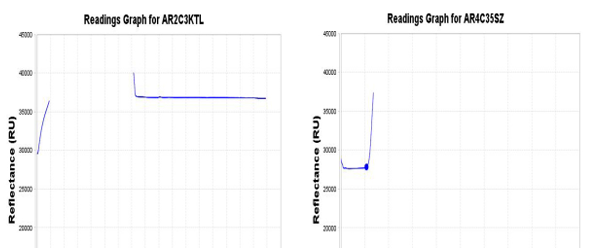Department of Laboratory Medicine, Keimyung University School of Medicine, Daegu, Korea
Corresponding to Namhee Ryoo, E-mail: nhryoo@dsmc.or.kr
Ann Clin Microbiol 2023;26(2):37-40. https://doi.org/10.5145/ACM.2023.26.2.2
Received on 17 March 2023, Revised on 8 May 2023, Accepted on 22 May 2023, Published on 20 June 2023.
Copyright © Korean Society of Clinical Microbiology.
This is an Open Access article distributed under the terms of the Creative Commons Attribution Non-Commercial License (https://creativecommons.org/licenses/by-nc/4.0/) which permits unrestricted non-commercial use, distribution, and reproduction in any medium, provided the original work is properly cited.
Automated blood culture systems are widely used in clinical microbiology laboratories to minimize the workload of laboratory personnel and permit fast turnaround times. However, sometimes false positive signals occur due to leukocytosis, presence of fastidious bacteria, or unexplained causes. We experienced false positive signal in a patient with hyperleukocytosis for the first time since the automated blood culture system was introduced in our hospital over 20 years ago. We present two case reports with literature review and describe the procedure for dealing with false-positive cases in our hospital.
Automated blood culture systems, False positive, Hyperleukocytosis
Bloodstream infections (BSIs) are major health concerns and can cause serious problems as they are associated with high mortality and morbidity rates. Blood culture is the gold standard method for the detection of BSIs. The automated blood culture systems continuously monitor blood culture bottles and detect microbial growth based on internal algorithms. Rapid detection of BSIs is important in achieving better patient outcomes. However, false positive signals occasionally occur due to leukocytosis, the presence of fastidious bacteria, or unexplained causes. We have experienced false positive signals in patients with hyperleukocytosis and present cases with the literature reviews and introduce the procedures of false-positive cases within our hospital


This study was approved by the Institutional Review Board of Dongsan Medical Center (IRB-2023-03019).
No potential conflicts of interest relevant to this article were reported.
None.
1. Opota O, Croxatto A, Prod’hom G, Greub G. Blood culture-based diagnosis of bacteraemia: state of the art. Clin Microbiol Infect 2015;21:313-22. 

2. Ruiz-Giardin JM, Martin-Diaz RM, Jaqueti-Aroca J, Garcia-Arata I, Martin-Lopez JVS, Buitrago MS. Diagnosis of bacteraemia and growth times. Int J Infect Dis 2015;41:6-10. 

3. Qian Q, Tang YW, Kolbert CP, Torgerson CA, Hughes JG, Vetter EA, et al. Direct identification of bacteria from positive blood cultures by amplification and sequencing of the 16s rRNA gene: evaluation of BACTEC 9240 instrument true-positive and false-positive results. J Clin Microbiol 2001;39:3578-82. 


4. Khan M, Siddiqi R, Konopleva M, Bhatti MM, Benton CB. Increased peripheral leukemia blasts leading to false-positive blood culture. Blood Cells Mol Dis 2017;64:8-9. 

5. Ebihara Y, Kobayashi K, Watanabe N, Taji Y, Maeda T, Takahashi N, et al. False-positive blood culture results in patients with hematologic malignancies. J Infect Chemother 2019;25:404-6. 

6. Martinez RM, Martinez R, Partal Y, Casas J, Llosa J, Almagro M. An infrequent cause of falsepositive blood cultures. Clin Microbiol Newsl 1993;15:7-8. 
7. Ziegler R, Johnscher I, Martus P, Lenhardt D, Just HM. Controlled clinical laboratory comparison of two supplemented aerobic and anaerobic media used in automated blood culture systems to detect bloodstream infections. J Clin Microbiol 1998;36:657–61. 


1. Opota O, Croxatto A, Prod’hom G, Greub G. Blood culture-based diagnosis of bacteraemia: state of the art. Clin Microbiol Infect 2015;21:313-22.
2. Ruiz-Giardin JM, Martin-Diaz RM, Jaqueti-Aroca J, Garcia-Arata I, Martin-Lopez JVS, Buitrago MS. Diagnosis of bacteraemia and growth times. Int J Infect Dis 2015;41:6-10.
3. Qian Q, Tang YW, Kolbert CP, Torgerson CA, Hughes JG, Vetter EA, et al. Direct identification of bacteria from positive blood cultures by amplification and sequencing of the 16s rRNA gene: evaluation of BACTEC 9240 instrument true-positive and false-positive results. J Clin Microbiol 2001;39:3578-82.
4. Khan M, Siddiqi R, Konopleva M, Bhatti MM, Benton CB. Increased peripheral leukemia blasts leading to false-positive blood culture. Blood Cells Mol Dis 2017;64:8-9.
5. Ebihara Y, Kobayashi K, Watanabe N, Taji Y, Maeda T, Takahashi N, et al. False-positive blood culture results in patients with hematologic malignancies. J Infect Chemother 2019;25:404-6.
6. Martinez RM, Martinez R, Partal Y, Casas J, Llosa J, Almagro M. An infrequent cause of falsepositive blood cultures. Clin Microbiol Newsl 1993;15:7-8.
7. Ziegler R, Johnscher I, Martus P, Lenhardt D, Just HM. Controlled clinical laboratory comparison of two supplemented aerobic and anaerobic media used in automated blood culture systems to detect bloodstream infections. J Clin Microbiol 1998;36:657–61.